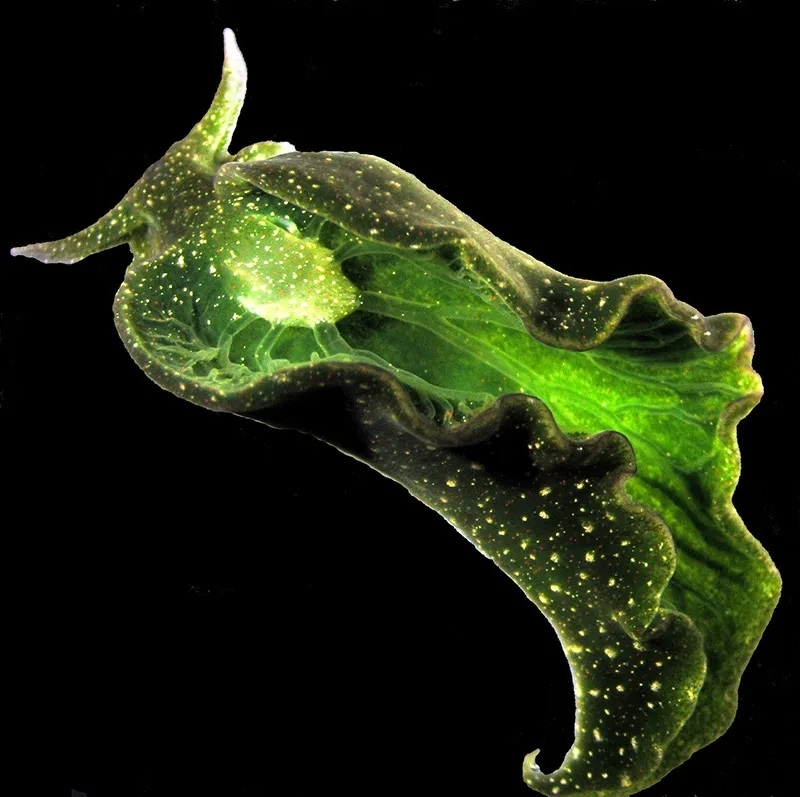Celebrity Slugs Prove Photosynthesis Isn’t Just for Plants | Martha's Vineyard Times

This is not the origin story of the next superhero, but instead, the catalyst for metamorphosing from the juvenile to the adult phase of life for Elysia chlorotica, a sea slug native to Martha’s Vineyard and much of the Eastern Seaboard. If this sounds like magic, consider too that the “secret ingredient” is found in an algae you’ve likely trod over recently. The really inconceivable part, however, lies within the slug itself.

Hatching into shallow marine environments in the early spring, these slugs live for only 11 months — dying shortly after laying eggs the following spring. Within this relatively short span of time, each of these one- to two-inch slugs accomplishes something that has both baffled and astonished scientists for more than 30 years.
One such scientist is Sidney Pierce. Professor emeritus of biology at the University of South Florida, Pierce is on the forefront of E. chlorotica research, and has been for more than 30 years. He credits two of his former students in an invertebrates class at the Marine Biological Laboratory in Woods Hole for introducing him to E. chlorotica. Read more of the article here.
Source: Celebrity sea slugs prove photosynthesis isn’t just for plants – The Martha’s Vineyard Times